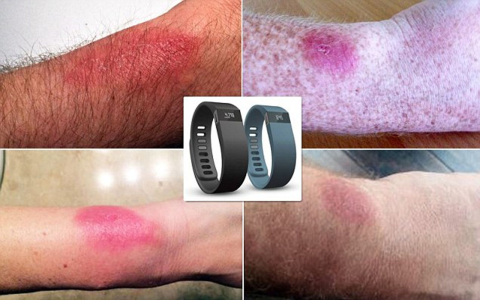Fitbit Wrist Burn: Understanding the Risks and Prevention Strategies
In the fast-paced world we live in today, it’s no surprise that wearable fitness trackers like Fitbit have become increasingly popular. These devices allow us to track our steps, monitor our heart rate, and even analyze our sleep patterns. However, with the growing reliance on these gadgets, there is a new concern emerging – the risk of "Fitbit wrist burn."

What is Fitbit wrist burn?
Fitbit wrist burn, also known as Fitbit rash, is a common skin irritation that occurs when wearing a Fitbit device for an extended period of time. The constant friction and pressure from the wristband can cause redness, itchiness, and even blisters on the skin. While not life-threatening, Fitbit wrist burn can be uncomfortable and bothersome for those affected.
Factors contributing to Fitbit wrist burn
There are several factors that can contribute to the development of Fitbit wrist burn. One of the main culprits is wearing the device too tightly or for long periods without giving the skin a chance to breathe. The materials used in the wristband, such as rubber or plastic, can also contribute to skin irritation, especially for those with sensitive skin. In addition, sweat and moisture trapped between the device and the skin can further exacerbate the problem.
Prevention strategies
To prevent Fitbit wrist burn, it’s important to take proactive measures to protect your skin. Here are some strategies you can implement:
1. Wear the Fitbit loosely: Avoid wearing the device too tightly on your wrist. A snug fit is ideal, but make sure there is enough wiggle room to allow air circulation and minimize friction.
2. Give your skin a break: Take breaks from wearing the Fitbit, especially during activities that may cause excessive sweating. This will allow your skin to breathe and reduce the risk of irritation.

3. Clean the device regularly: Sweat, dirt, and bacteria can accumulate on the Fitbit wristband, leading to skin irritation. Clean the device regularly with mild soap and water to prevent this buildup.
4. Opt for alternative wristband materials: If you have sensitive skin, consider switching to a different wristband material, such as fabric or leather, that is less likely to cause irritation.
5. Use anti-chafing products: Applying a thin layer of anti-chafing cream or petroleum jelly on your skin before wearing the Fitbit can help reduce friction and prevent skin irritation.
6. Consult a dermatologist: If you experience persistent skin irritation or allergic reactions to the Fitbit device, seek advice from a dermatologist. They can recommend personalized solutions and treatments to address your specific concerns.
By following these prevention strategies, you can minimize the risk of Fitbit wrist burn and continue to enjoy the benefits of your wearable fitness tracker. Remember, your skin health is just as important as your physical health, so take care of it accordingly.
maintaining a balance between technology and skin health is crucial when using wearable fitness trackers like Fitbit. By being mindful of the risks and implementing preventive measures, you can stay ahead of potential issues like Fitbit wrist burn and continue on your fitness journey with peace of mind.



